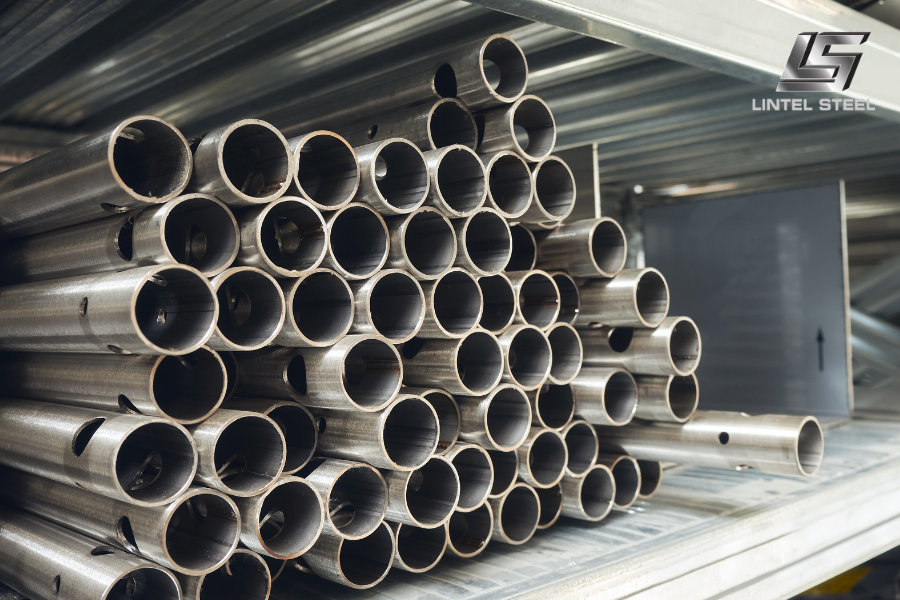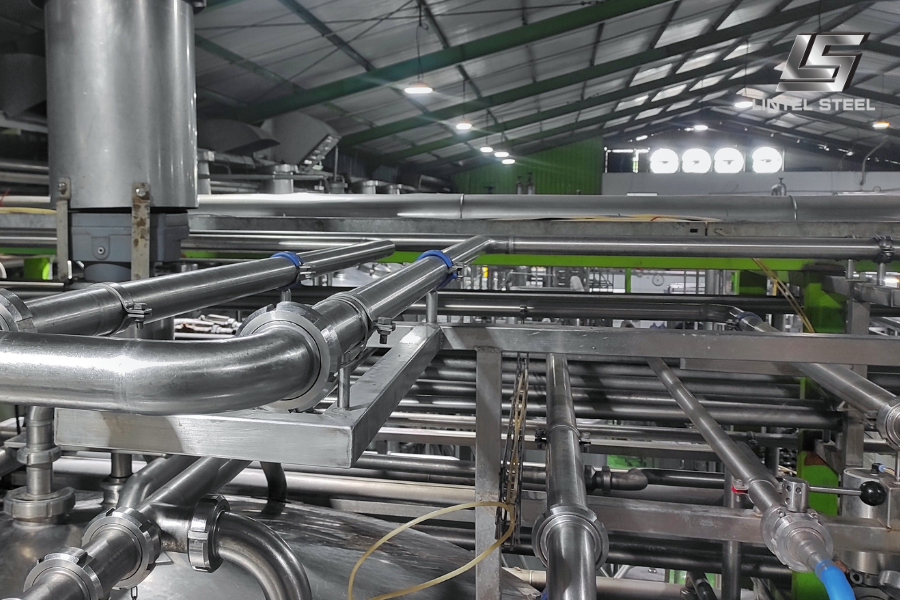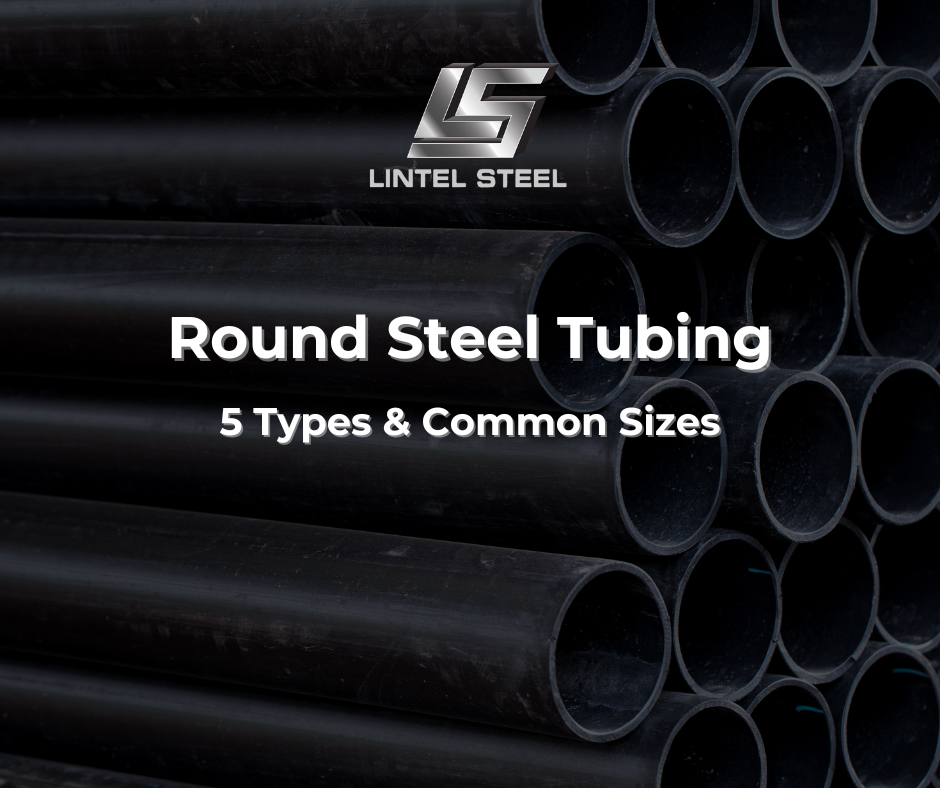Stainless Steel Tubing: 5 Essential Points Before Buying

When you walk through a modern city—whether it’s the polished railings in shopping centres, the sleek frames in high-rise buildings, or the durable pipelines in factories—there’s a good chance you’re looking at stainless steel tubing. This material isn’t just strong; it’s also designed to last, even in tough environments. Builders, engineers, and designers rely on stainless steel tube not only for its durability but also for its clean, professional finish. From construction to manufacturing, its role is bigger than most people realise, making it one of the most dependable materials available today.
What is Stainless Steel Tubing?
Stainless steel tubing is a hollow, cylindrical or rectangular steel product manufactured from stainless steel. Known for its corrosion resistance, strength, and clean appearance, stainless tubing is widely used in construction, engineering, plumbing, and manufacturing. Unlike mild steel or galvanised options, stainless steel tubing naturally resists rust, making it ideal for both indoor and outdoor applications.
Builders often choose stainless steel tube when they need durability and a modern, polished finish. It comes in round, square, and rectangular forms, giving fabricators flexibility for both structural and decorative projects.
Key Features of Stainless Steel Tubing
What makes stainless steel tubing one of the most widely used building and fabrication materials? Its features combine strength, durability, and style, offering long-term value across industries ranging from residential construction to heavy industrial projects. Below are the standout qualities that make stainless tubing a superior choice:
- Corrosion Resistance – Perhaps the most famous feature of stainless steel tubing is its ability to resist rust, staining, and corrosion. Thanks to the chromium content in stainless steel, a thin protective film forms on the surface, which prevents oxidation. This makes stainless tubing an excellent option for outdoor structures, marine environments, food processing plants, and chemical industries where exposure to moisture, salt, or chemicals is common.
- Durability and Strength – Stainless steel tubing is incredibly strong, with high tensile strength that allows it to handle heavy loads, high pressure, and impacts. Unlike softer metals that dent or deform under stress, stainless steel tube maintains its structural integrity even under demanding conditions. This makes it an excellent choice for construction, infrastructure, and industrial applications where reliability is essential.
- Aesthetic Appeal – Beyond performance, stainless tubing is also valued for its sleek and modern appearance. Polished stainless steel tube has a reflective, clean finish that suits architectural features such as balustrades, handrails, and decorative frameworks. Designers often select stainless tube not only for functionality but also for its ability to elevate the visual quality of a project.
- Low Maintenance – With stainless steel tubing, ongoing upkeep is minimal. Unlike mild steel, which requires painting, galvanising, or other coatings to resist corrosion, stainless tube naturally maintains its appearance and strength. Builders save both time and money on repairs, replacements, and protective treatments over the lifespan of the material.
- Versatility in Use – Stainless steel tubing is available in a wide variety of shapes (round, square, rectangular), wall thicknesses, and finishes. This versatility allows it to serve both structural and decorative purposes. Whether it’s being used as a structural support beam, a piping solution in plumbing, or a visible design feature, stainless tubing adapts easily to multiple requirements.
- Hygienic and Safe – Stainless steel has a non-porous surface that resists bacteria and is easy to clean, making stainless tubing an excellent choice for industries that demand high hygiene standards, such as food processing, pharmaceuticals, and hospitals.
Taken together, these features explain why stainless steel tubing continues to dominate in both commercial and residential projects.
Why Builders Choose Stainless Steel Tubing
When it comes to choosing materials, builders often weigh cost against durability and performance. While stainless steel tubing may have a higher initial price tag than mild steel or galvanised alternatives, professionals consistently choose it for long-term savings and reliability.
One of the main reasons builders choose stainless steel tube is longevity. In environments exposed to weather—such as Perth’s coastal areas—mild steel corrodes quickly, leading to repairs and replacements. Stainless tubing, however, withstands salty air, rain, and UV exposure, reducing the need for constant maintenance. Over a building’s lifespan, this means fewer disruptions, lower upkeep costs, and greater client satisfaction.
Another factor is strength-to-weight ratio. Stainless tubing offers impressive strength without being overly heavy, which makes handling and installation more efficient. For large-scale projects such as commercial complexes, bridges, or factories, this efficiency can save builders significant labour and time.
Builders also appreciate the aesthetic flexibility of stainless steel tubing. Unlike painted steel, which chips or fades, polished stainless maintains its appearance over years. This makes it ideal for exposed structures where both form and function matter, such as staircases, railings, and outdoor frameworks.
Furthermore, stainless tubing’s eco-friendly qualities make it a preferred choice for modern builders focused on sustainability. Stainless steel is fully recyclable, and many stainless tubes available on the market today already contain recycled material. This aligns with green building standards and appeals to environmentally conscious clients.
In short, builders choose stainless steel tubing because it delivers durability, low maintenance, aesthetic appeal, and sustainability—all while providing long-term cost efficiency. Whether for residential, commercial, or industrial projects, stainless tubing remains a smart investment.
Applications of Stainless Steel Tubing
The uses of stainless steel tubing are extensive:
- Construction and Architecture – Handrails, balustrades, structural frames, and modern building designs.
- Plumbing and Piping – Transporting water, gas, and other fluids safely.
- Industrial and Manufacturing – Machinery parts, conveyor systems, and heavy-duty frameworks.
- Automotive and Marine – Exhaust systems, boat fittings, and equipment exposed to saltwater.
- Furniture and Design – Stainless steel tube is often used in tables, chairs, shelving, and decorative pieces.
Its ability to combine strength with appearance makes stainless tubing a go-to material across industries.
Common Sizes of Stainless Steel Tubing
Stainless steel tubing comes in a wide variety of sizes to suit different applications. Some commonly used options include:
- Round Tubing: 12.7 mm x 1.2 mm, 25.4 mm x 1.6 mm, 50.8 mm x 2.0 mm, up to 300 mm diameters.
- Square Tubing: 20 x 20 mm, 40 x 40 mm, 75 x 75 mm, 100 x 100 mm, with wall thicknesses from 1.5 mm to 6 mm.
- Rectangular Tubing: 50 x 25 mm, 100 x 50 mm, 150 x 100 mm, with wall thickness options ranging from 2 mm to 6 mm.
Larger sizes are typically used for structural and industrial purposes, while smaller stainless steel tube options are suited to decorative and plumbing applications.
How to Choose the Right Stainless Steel Tubing
When selecting stainless steel tubing, consider these factors:
- Grade – Grade 304 is the most common, suitable for general use. Grade 316 is ideal for marine or chemical environments due to its higher corrosion resistance.
- Size and Wall Thickness – Match the tubing size to the load or pressure requirements of your project.
- Finish – Choose polished stainless tube for visible structures, or matte finishes for industrial uses.
- Budget vs. Lifespan – While stainless tubing costs more initially, its low maintenance and long life make it more economical over time.
- Supplier Reliability – Ensure your stainless steel tubing is compliant with Australian Standards to guarantee quality and safety.
Where to Buy Stainless Steel Tubing in Perth
For builders and fabricators in Perth, sourcing stainless steel tubing locally ensures fast delivery, expert advice, and products tailored to local conditions. Perth suppliers stock a wide range of stainless tube sizes and finishes, from polished decorative tubing to heavy-duty industrial pipes. Buying locally also means easier access to cutting, fabrication, and customised orders, so you get exactly what your project requires.
You can find out more about us at our Fanpage Lintel Steel.





